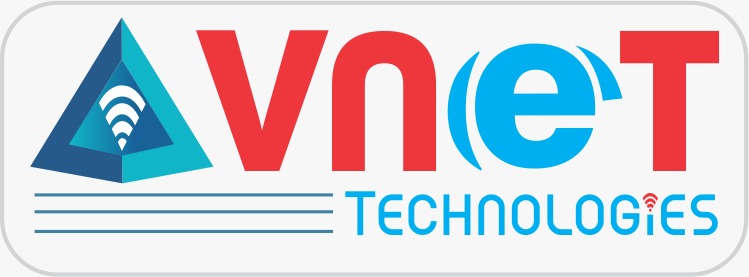
In today’s fast-paced digital landscape, mastering AWS DevOps techniques is crucial for achieving high performance and operational excellence. As organizations increasingly rely on AWS to deliver scalable and reliable applications, implementing advanced DevOps practices can significantly enhance efficiency, reduce costs, and improve overall system performance. In this blog, we’ll explore some advanced AWS DevOps techniques that can help you take your performance to the next level.
1.Infrastructure as Code (IaC) with AWS CloudFormation and Terraform
Infrastructure as Code (IaC) is a foundational practice in DevOps that allows you to manage and provision your infrastructure using code. AWS CloudFormation and Terraform are two powerful tools for this purpose.
AWS CloudFormation: This service enables you to define and provision AWS infrastructure using JSON or YAML templates. CloudFormation automates the setup and deployment of resources, ensuring consistency and repeatability.
Terraform: An open-source IaC tool that supports multi-cloud environments. Terraform’s declarative language allows you to define infrastructure in a simple, readable format. Its state management and module system offer advanced capabilities for managing complex environments.
Advanced Tip: Use AWS CloudFormation StackSets or Terraform Workspaces to manage multiple environments or accounts. This ensures uniformity and simplifies management across different stages of your deployment pipeline.
2.Continuous Integration and Continuous Deployment (CI/CD) Pipelines
CI/CD pipelines are essential for automating the build, test, and deployment processes. AWS provides a suite of services to build robust CI/CD pipelines:
AWS CodePipeline: A fully managed service that orchestrates the various stages of your pipeline, integrating with CodeBuild, CodeDeploy, and third-party tools.
AWS CodeBuild: A build service that compiles source code, runs tests, and produces artifacts for deployment. It scales automatically based on the build load.
AWS CodeDeploy: Automates the deployment of applications to various compute services such as EC2, Lambda, and ECS.
Advanced Tip: Implement blue-green or canary deployments using AWS CodeDeploy to minimize downtime and reduce deployment risk. Blue-green deployments allow for a smooth switch between old and new versions, while canary deployments enable gradual rollouts to a small subset of users.
3.Containerization and Orchestration
Containerization, combined with orchestration, enables scalable and efficient application deployment.
Amazon ECS: A fully managed container orchestration service that supports Docker containers. ECS integrates with other AWS services and offers a high level of control over container management.
Amazon EKS: Managed Kubernetes service that simplifies running Kubernetes on AWS. EKS handles the Kubernetes control plane, letting you focus on your applications and workloads.
Advanced Tip: Leverage AWS Fargate with ECS or EKS for serverless container management. Fargate abstracts the underlying infrastructure management, allowing you to focus solely on building and deploying your applications.
4.Monitoring and Logging
Effective monitoring and logging are crucial for maintaining performance and troubleshooting issues. AWS provides several tools to keep your applications and infrastructure under observation:
Amazon CloudWatch: Provides monitoring and observability for AWS resources and applications. CloudWatch collects metrics, logs, and events, enabling real-time visibility into your system’s performance.
AWS X-Ray: Helps with distributed tracing to analyze and debug microservices applications. It provides insights into latency issues and service interactions.
Advanced Tip: Use CloudWatch Logs Insights for advanced log querying and analysis. Create custom dashboards and alarms to proactively monitor key performance metrics and detect anomalies.
5. Security and Compliance
Security and compliance are integral to maintaining a high-performance AWS environment. AWS offers several services and practices to enhance your security posture:
AWS IAM: Manages user permissions and access controls to AWS resources. Implement least privilege access and regularly review IAM policies.
AWS Security Hub: Provides a comprehensive view of your security posture across AWS accounts. It aggregates and prioritizes findings from various AWS security services.
AWS Config: Tracks configuration changes and evaluates compliance with industry standards and best practices.
Advanced Tip: Implement automated security checks and compliance audits using AWS Config Rules and AWS Security Hub’s security standards. Integrate these checks into your CI/CD pipeline to ensure that security best practices are enforced throughout the development lifecycle.
6. Serverless Architectures
Serverless architectures can greatly simplify deployment and reduce operational overhead. AWS offers several serverless computing services:
AWS Lambda: Runs code in response to events and automatically manages the compute resources. Lambda integrates with other AWS services, allowing you to build scalable and event-driven applications.
Amazon API Gateway: Facilitates the creation and management of APIs that can trigger Lambda functions or other backend services.
Advanced Tip: Use AWS Step Functions to coordinate complex workflows and microservices using Lambda. Step Functions provide visual workflows and error handling, making it easier to manage serverless applications.
Conclusion
Implementing advanced AWS DevOps techniques can significantly enhance performance and operational efficiency. By leveraging tools like IaC, CI/CD pipelines, containerization, and serverless architectures, you can build robust, scalable, and high-performing applications. Additionally, focusing on monitoring, logging, and security ensures that your systems remain resilient and secure. As you advance in your DevOps journey, continuously explore and adapt new AWS features and practices to stay ahead in the ever-evolving cloud landscape.
Partnering with experts such as VNET Technologies in Saravanampatti, Coimbatore, can further streamline your AWS environment and drive success. By embracing these advanced techniques, you’ll not only optimize your AWS setup but also position your organization for success in the competitive digital arena.
